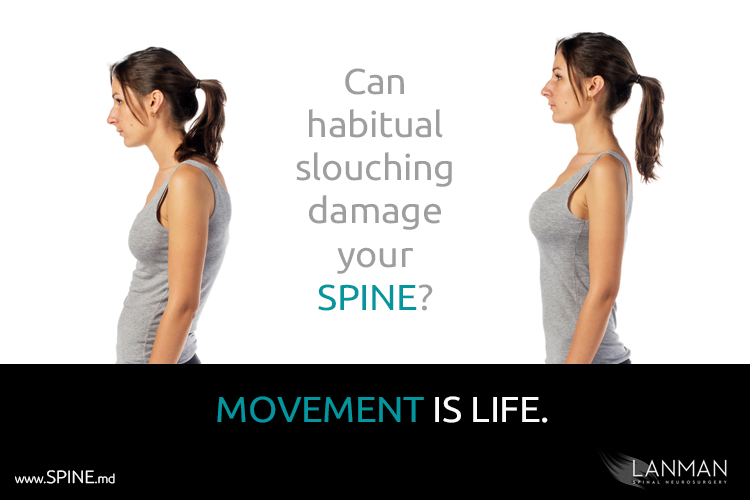How the Fourth Dimension of Health Does More than Make You Better
As a neurosurgeon, I specialize in spinal surgery. But my work is more than surgery. My work begins with assessing what I call the fourth dimension of health.
As we live longer, we want to be more active and functional as we age. We aim for a quality of life that is often greater than what our parents achieved. Naturally, we think about our spine a lot; it is after all the center of motion, balance, and functionality. If our spine is not healthy, we have pain, neurologic weakness, numbness, and tingling which can – if untreated – disable us and prevent us from enjoying life and experiencing our full potential.
Patients often come to me after pain and disability have already negatively affected their health and quality of life.
What if we worked together to anticipate problems and plan – not to merely “get better” but to become “greater than better” by anticipating problems before they have a chance to take us down? Where do we start? With a thorough assessment of nutrition, fitness, biologic intelligence, and disease screening.
- NUTRITION: If you think of your body as a furnace, then nutrition is the charcoal you need for sustainable health. How well your body is supplied with minerals and nutrients defines your ability to maintain quality health levels and efficient healing. It’s important to remember that nutrition is not a “one size fits all” proposition. No two people have the same nutritional needs. A personal assessment and evaluation will uncover nutritional values for all sorts of targets: weight change, body appearance, strength, healing.
- FITNESS: Fitness is crucial for a healthy musculoskeletal system. In this case, we want plenty of muscle strength around the whole length of your spine. A strong spine enhances functionality and movement. I study how my patients exercise and what they do to relax. Often, we need smarter and shorter exercise periods to raise the basal metabolic rate, help burn off more fat, and build more muscle.
- BIOLOGIC INTELLIGENCE: To get the clearest picture possible, you must discover your chemical balance. That means knowing more about your body than ever before. We need to know how your body metabolizes protein, fat, and carbohydrates. Not only do we need to learn how you burn fat off, but what it takes to build healthy muscle. Like nutrition, there’s no formula for what works for everyone. A good biologic analysis takes on hormonal balance, genetic history, your personal history, and your environment.
- DISEASE SCREENING: To complete the picture, I recommend asymptomatic disease screening. “Asymptomatic” (before symptoms emerge) reminds me of the adage “a stitch in time saves nine.” By the time disease has had the opportunity to produce symptoms we notice, it’s already had a negative impact on our quality of life. The goal is to look for any potential disease – coronary artery calcification, possible aneurysm, early stage cysts or other growth that could lead to cancer – we need to look into the looking glass so to speak and plan accordingly.
The data from these four factors – nutrition, fitness, biologic intelligence, disease screening – will lead to a comprehensive and holistic strategy for greater health. They give us the tools for smarter planning so that every move, every measure, and every action is as effective as it possibly can be.
When the four-dimensional concept is applied, you can stave off additional injury and rehabilitate quicker if surgery is needed. Most important, the entire process of “getting better” is far more efficient that just guessing and hoping for the best.
Why I Developed This Unique Treatment Philosophy
In the past, we used to wait for patents to get so ill that they were practically forced to come in and see their doctor – to “get better” – and hope that the spine surgeon, the hip surgeon, or the knee surgeon can make the necessary repairs. This is not a sustainable plan for a high quality of life. Likely as not, the patient waits so long that the process of degeneration has become so severe that the options are limited.
Consider that many new, minimally invasive techniques require intervention at the earliest possible time. If we wait until you’re limping into the office in excruciating pain, it is likely you are going to need invasive procedures and long healing times.
Why do people wait so long to see a doctor? Most people are terrified of spine surgery. They’ve heard horror stories about the “nightmare” experience. They have friends who send them links to stories about spine surgery cases that can really be shocking.
Keep in mind that people who have successful spine surgery don’t often go on the Internet to brag about the experience. They’re out there, living their lives, being functional, active, and enjoying themselves. And the most successful patients work ahead of their problems, identify early issues with their doctors, and become proactive in maintaining their health. They are the ones who have discovered the fourth dimension to being greater than better.







